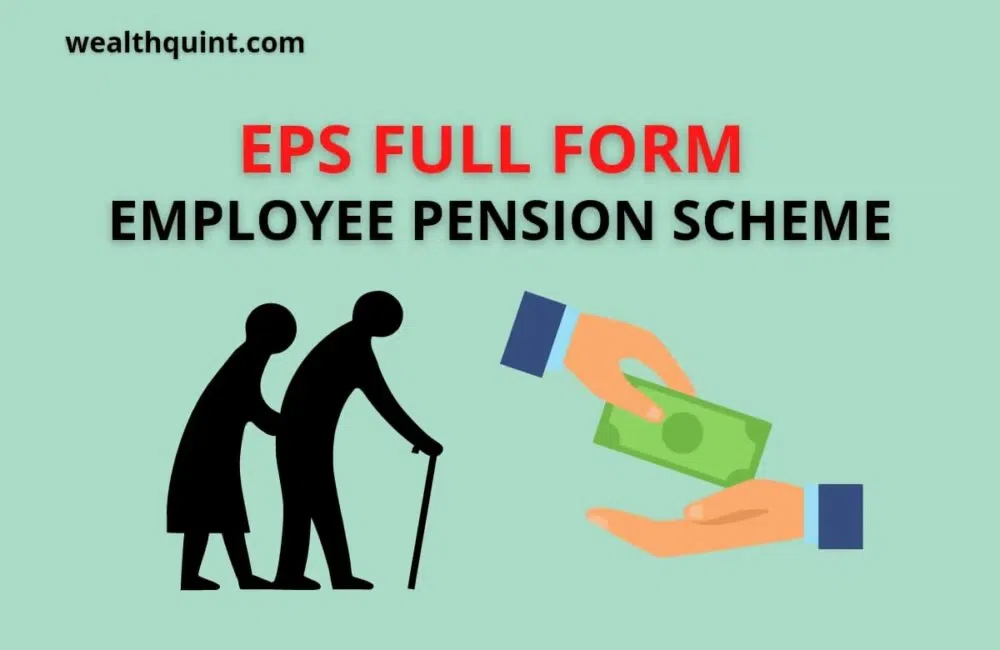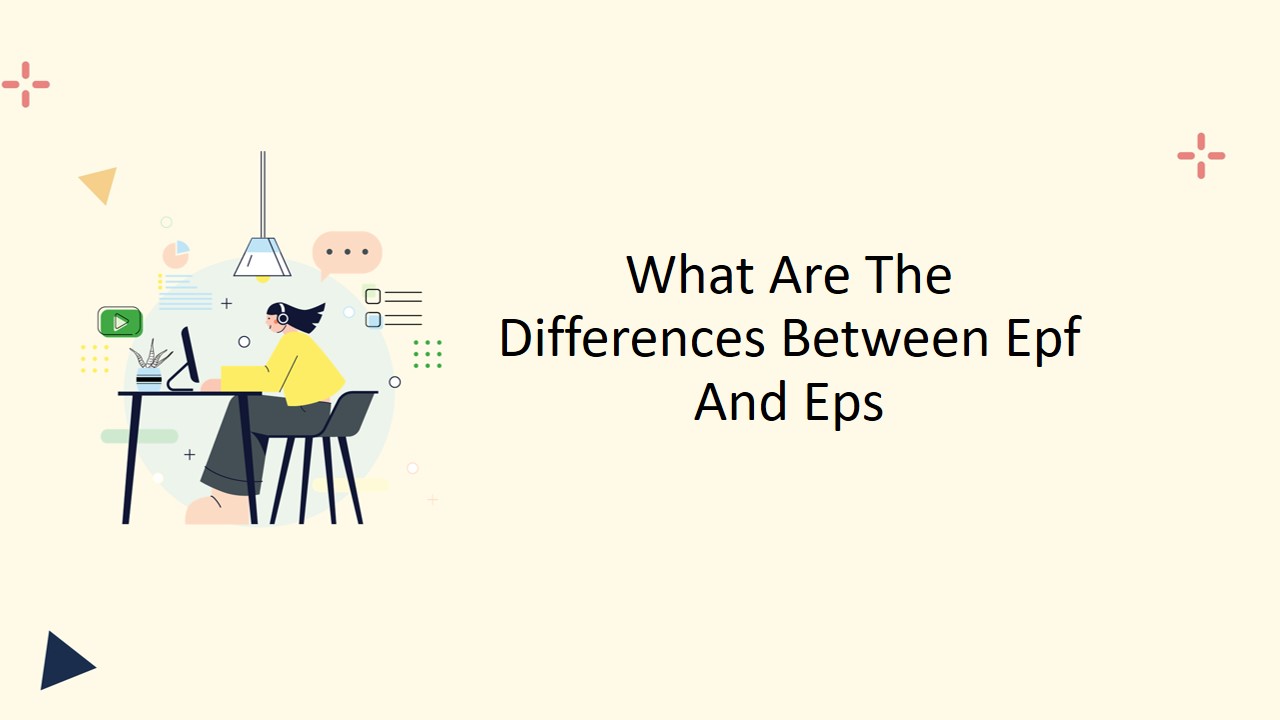The majority of people are unable to differentiate between epf vs eps. Even though they are both pension plans that the government established to assist salaried persons in savings, there are notable variations.
The Employee’s Provident Fund, along with the Miscellaneous Provisions Act of 1952, is the legislation that established the epf and eps. The programs are overseen by a central board of trustees, which comprises members from the government (both federal and state), businesses, and workers.
The government of India has established several investments and savings programs to assist citizens with putting money aside for the future. The Employees’ Provident Fund (EPF) scheme, along with the EPS, are two of the most common employee benefit plans (EPS). The primary objective of both sets of programs is to assist people in saving money for their retirement. Both plans provide guaranteed rates of return and are geared at those already receiving a salary.
Did you know?
You are only eligible to file for EPF withdrawal once you have been unemployed for two months after quitting your former position.
Employees in the corporate sector are eligible to participate in the Employees’ Provident Fund plan, a retirement benefits program that provides a set income upon retirement. The project requires both the employee and the employer to make consistent contributions to a retirement fund throughout their employment. This retirement corpus is available to the employee when they have reached the age of 58 or after they have been jobless for at least 60 days.
The following is a list of some of the characteristics of the scheme:
- Once you have completed five service years, you will be eligible to withdraw from the plan. This drawdown is permitted to fulfill certain financial obligations, such as purchasing a property, repaying a mortgage loan, pursuing higher education, and other similar commitments.
- The Employees’ Provident Fund is a program that is exempt from taxation in all three aspects: the investments made, the interest earned, and the benefits received.
- The investment strategy generates consistent interest at a predetermined rate. The government established this interest rate, subject to frequent reviews.
Also Read: EPF Withdrawal Rules: For Home Loan, Medical, Retirement
What do you mean by the EPS Plan?
The epf pension scheme is a program that ensures workers will receive pension payments in the future. Employees contributing members of the EPFO are eligible to participate in this program. In addition, workers who make incomes of up to ₹15,000 are qualified for participation in the program. Following the terms of the program, the employer will contribute 8.67% of the employee’s gross pay, up to a maximum of ₹1,250, to the EPS account.
This account builds up a balance during the employee’s time in service, and then, when the employee retires, the pension payment comes out of the total sum that has been built up.
The following is a list of the characteristics of the plan:
- Only the employer is responsible for making contributions to the EPS system.
- There is no accumulation of interest income on the program.
- The employee must be 58 years old before they are eligible to receive a pension
- A lump-sum withdrawal may be made when fewer or lesser than ten years of service have been completed or if the member has achieved 50, whichever comes first.
- A pension may also be obtained after the age of 50.
The employee will continue to receive their pension payments throughout their whole life. The pension payments will continue to be made to the nominee even after the employee has passed away.
Difference Between EPF and EPS
Below is the significant difference between epf and eps
|
Point of Difference |
EPF |
EPS |
|
Validity |
EPF appeals to firms or organizations where employees number exceed 20. |
EPS applies to those who are EPFO members. they contribute to the account of EPS |
|
Employees who are eligible |
It is mandatory for employees who take a salary and earn up to fifteen thousand. Moreover, employees with a salary more than the former mentioned can contribute up to their wish |
Employees’ salary DA is up to ₹15K. |
|
Benefaction of an Employee |
The benefaction of an employee is 12% of the employee’s salary, which is essential, and DA |
Nil |
|
Allowance of an Employer |
An employer also accords 12%. |
8.33% of the payment and the DA |
|
Limitation or restriction on Contributions |
The contribution’s upper or higher limit is 12% of fifteen thousand per month. |
The contribution has a limit or restriction, up to 8.33% of the payment up to ₹15K. |
|
Min or Max Limit on Deposit |
The contribution is fixed at 12% |
Same as above |
|
Age of Withdrawal |
After reaching the age of 58 or being jobless for more than two months, you are eligible to withdraw |
One will attain the pension after the age of 58 years. |
|
Interest Rate |
Interest is computed monthly and paid after each fiscal year. RI is set by the government and reviewed from time to time. |
There is no application of interest rate. |
|
Withdrawal |
Withdrawal can occur after fifty-eight years or if there is no employment for two months. |
Pension is obtained only after fifty years |
|
Premature Withdrawal |
In some circumstances, such as marriage, a child’s schooling, the repayment of a debt, unemployment, etc., a partial withdrawal may be requested. Additionally, one is permitted to withdraw their whole EPF sum. |
After reaching the age of 50, one is eligible to obtain a pension. Additionally, the service determines the maximum amount that may be taken out of the performance. |
|
Financial Benefits |
The total or complete amount plus interest can be taken after retirement. |
EPS will be paying pension for lifelong. If the member dies, an annuity is paid to his nominee. |
|
Tax Benefit |
₹1.5 lakh deduction of the contribution of the employee. |
No tax deduction is permitted as employee benefaction is nothing. |
|
A tax that is Applicable |
The interest you get from EPF is free from taxes. Contributions over ₹2,500,000 are, however, subject to taxation. If you remove your EPF balance before five years, a 10% tax withholding will be deducted. |
It will be taxable when you get the pension and the amount. |
Also Read: EPF Calculator
Is EPF Or EPS Account Transferable
The Universal Account Number, or UAN, is given to each member of the scheme who contributes by the Employees Provident Fund Organization (EPFO). The UAN will stay the same throughout the member’s job history, and it will be possible to access any other info via the UAN. If the worker switches jobs, he will be able to continue making contributions to his EPF account as long as he provides his new employer with an updated copy of his UAN number. You must do activation for your UAN and connect your PAN and Aadhaar to make online money transfers.
EPF and EPS Apply To Whom
- Employees who are employed by companies that are members of the Employees’ Provident Fund Organisation are eligible to participate in this savings program (EPFO).
- Compliance is obligatory when the number of staff members in an organization is more than twenty.
- It is required of salaried personnel with an annual income of up to Rs. 15,000 (including basic pay and dearness allowance).
- Staff members who make more than ₹15,000 per month are eligible to donate freely.
Conclusion
The epf and eps are two of India’s most well-known government-sponsored savings and investing tools. A significant factor in their appeal is that they give the ability to save, finance, and double the hard-earned money of a Provident Fund account holder, allowing them to secure the precious years of their lives. Customers in both EPF and EPS are guaranteed a high rate of return on their money. For the most part, both plans are geared at paid workers.






